Training is vital for firefighters. It helps them do their job safely and save people’s lives. It’s a big part of being a firefighter. This article will explore the top 10 benefits of firefighter training. From improving physical fitness and building teamwork skills to gaining valuable knowledge about fire behavior and emergency medical procedures, fire fighting training provides many benefits that can help firefighters excel in their careers and better serve their communities.
Here are the top 10 benefits of firefighting training:
Knowledge and skill development
Training is essential for firefighters to acquire the knowledge and skills to safely and effectively respond to fires, rescue people, and provide medical assistance.
Whether new to the profession or have been in the field for years, ongoing training helps firefighters stay updated on the latest techniques, equipment, and protocols. Training helps to ensure that they are prepared for any situation.
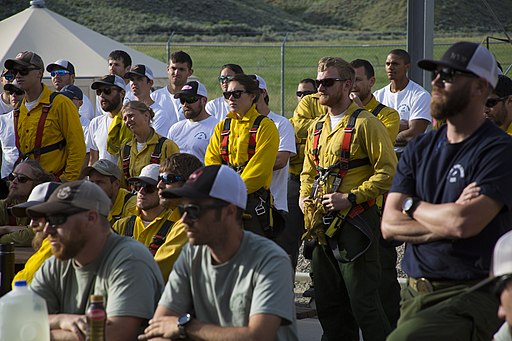
National Rappel Training
Helps improve safety
Firefighting is a dangerous job, with firefighters facing a variety of hazards on the job, including heat, smoke, and physical exertion. Training can help improve the safety of firefighters by teaching them the skills and knowledge they need to safely and effectively respond to fires and other emergencies.
Through training, firefighters can learn how to use protective gear and equipment properly. They also learn how to stay safe in hazardous environments, anticipate and avoid potential dangers. By staying safe on the job, firefighters can better protect themselves, their colleagues, and their communities.
One way that training can help improve the safety of firefighters is through their live fire training. Live fire training allows firefighters to gain hands-on experience working in real-life fire situations. This can better prepare them for the challenges and risks they may face on the job.
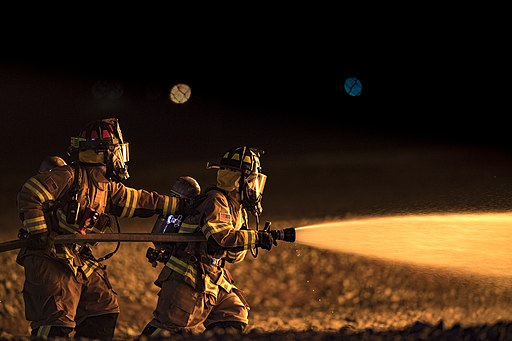
Firefighters from the 23d Civil Engineer Squadron advance towards a fire during nighttime, live-fire training, Jan. 10, 2017, at Moody Air Force Base, Ga.
During live fire training, firefighters can practice using their protective gear and equipment in a controlled environment. This training can help them become more familiar with the proper use of these gears and equipment and become more confident using them in real-life situations.
Promotes camaraderie
Firefighting is a team sport; training helps firefighters learn how to work together effectively to achieve common goals. Clear communication and cooperation during high-stressed scenarios are crucial to ensure the safety of the team and the people.
By building solid teams and improving coordination through training, firefighters can more effectively respond to fires and other emergencies, leading to better outcomes and a higher level of public safety.
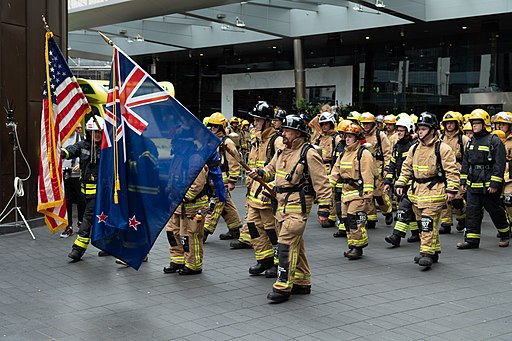
The Auckland 9/11 Memorial and Stair Climb, organized by Tony Scott, was conceived as a way to recognize the camaraderie shared by firefighters worldwide. It also honors those who lost their lives in the Tamaheree cool store fire in Hamilton, New Zealand in 2009.
Builds confidence
Training helps firefighters gain the confidence they need to perform their duties under pressure and in stressful situations.
As firefighters learn new skills and techniques and stay up to date with the latest technologies and best practices, firefighters can feel more prepared and capable on the job.
Adaptability
Firefighters must be able to adapt to changing circumstances and unfamiliar environments. Training can help firefighters learn how to think on their feet and make quick decisions in response to new or unexpected situations. It can also help them develop the ability to work effectively in various environments, including urban, rural, and wilderness settings.
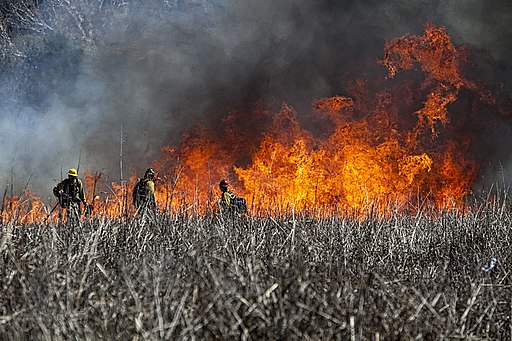
Wildland Fire Training at Crescent Moon
Leadership
Firefighting often requires leaders to make quick, decisive decisions. Training helps firefighters develop the leadership skills they need to lead their teams and manage complex situations effectively.
Firefighters learn to communicate effectively, make decisions under pressure, and delegate tasks to team members. Training helps them understand the importance of teamwork and how to work effectively with others to achieve a common goal.
Leadership skills are essential for all firefighters, but they are particularly crucial for those in leadership positions, such as team leaders, captains, and commanders.
Physical fitness
Firefighting is physically demanding, and training helps firefighters stay in top physical condition. Thus, training can help them perform their duties more effectively and reduce the risk of injuries on the job.
Physical fitness training can include activities such as cardio, strength training, and endurance exercises.
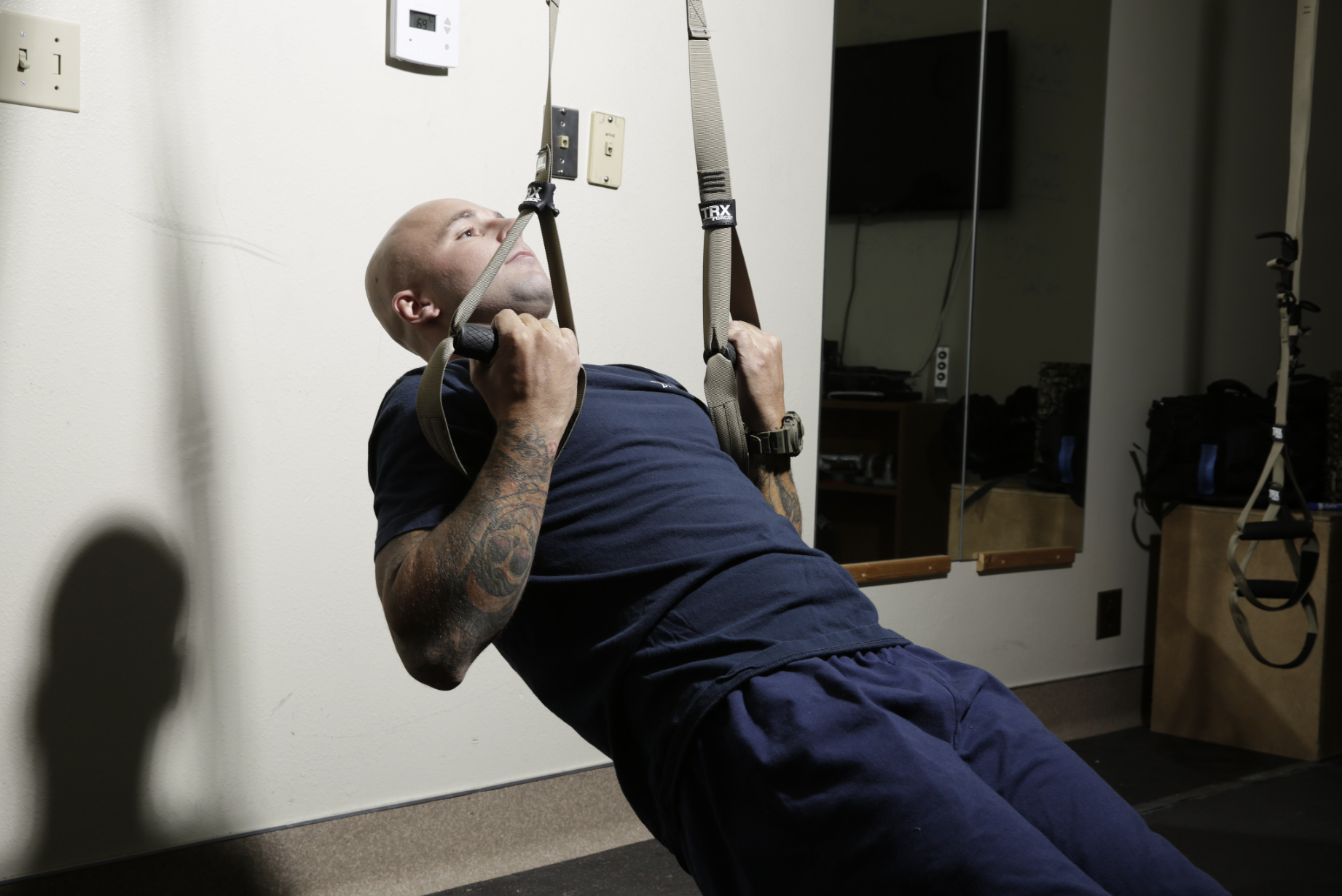
Firefighter David Pacileo of the Marine Corps Logistics Base Barstow Security and Emergency Services Fire Department puts his strength and endurance to the test with suspension training.
Mental toughness
Firefighting can be mentally and emotionally challenging, and training helps firefighters develop the mental toughness they need to face these challenges.
Firefighters are often called upon to respond to life-threatening emergencies and may witness disturbing or traumatic events. Training can help firefighters to develop coping strategies and resiliency skills. These can help them to deal with these challenges and maintain their mental and emotional well-being.
Professionalism
Training helps firefighters maintain standards and uphold the values and traditions of the fire service.
Community service
Firefighters serve their communities by protecting lives and property. Therefore, training helps them do so effectively and with compassion.
Fire Safety Training
Fire safety training is essential for firefighters, as it helps them to understand how fires start, how they spread, and how to prevent and control them.
In addition to helping firefighters to improve their safety and skills, fire safety training is also vital for businesses and organizations. By embracing fire safety training and implementing fire safety protocols, companies can help to prevent fires and protect their employees, customers, and assets.
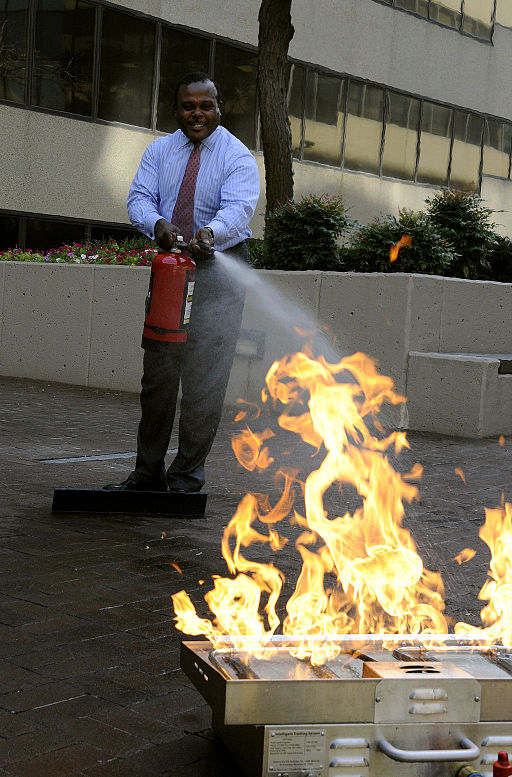
Calvin Gurley of the FEMA Office of the Chief Financial Officer (OCFO) demonstrates his firefighting skills by extinguishing a gas fire at FEMA Headquarters. This is part of National Fire Prevention Week training conducted by the Mt. Weather Fire and Rescue training division.
One key aspect of fire safety training is conducting a fire risk assessment. It involves identifying potential fire hazards in a building or workplace and taking steps to eliminate or mitigate them. Fire safety training courses can help employees to understand how to identify risks, evacuate a building safely. They also learn how to use fire fighting equipment.
Final Thoughts
The benefits of fire safety training go beyond just preventing fires and protecting employees. Training workers and employees in fire safety is essential for several reasons. Government legislation often requires companies to provide fire safety training to their workers. By investing in fire safety training, businesses can demonstrate their commitment to safety and compliance, enhancing their reputation and credibility.
Fire fighting and fire safety training are essential for firefighters’ success in the field. These types of training provide many benefits, including improved physical fitness, enhanced teamwork skills. Additionally, they provide valuable knowledge about fire behavior and emergency medical procedures.
Moreover, fire safety training is also crucial for businesses and organizations, as it helps to prevent fires and protect employees, customers, and assets. By embracing fire safety training and implementing fire safety protocols, companies can demonstrate their commitment to safety and compliance, enhancing their reputation and credibility.


